Our adventures today took us north then west to Natural Bridges National Monument.
Along the way, we had a short stop:
We arrived at the Monument and our first stop was the Visitor Center where we watched a movie and learned a little bit about the Natural Bridges and the area.
A little background:
In 1883 prospector Cass Hite wandered up White Canyon from his base camp along the Colorado River. In search of gold, he found instead three magnificent bridges water had sculpted from stone. In 1904 National Geographic Magazine publicized the bridges and in 1908 President Theodore Roosevelt proclaimed Natural Bridges National Monument, creating Utah’s first National Park System area.
People repeatedly occupied and abandoned this area from 9000 to 700 years ago. Only rock art and tools, left by those hunting small game and gathering wild plants, show humans living here then. About 900 years ago new migrants from across the San Juan River lived in small, single-family dwellings near the deepest, best watered soils throughout this area. In the 1200s, farmers from Mesa Verde migrated here, but by the 1300s the ancestral Puebloans migrated southward. Navajos and Paiutes lived here in historic time, and Navajo oral tradition holds that their ancestors lived among the early Puebloans.
For a time in the early 1900s, this land supported one of the largest cattle outfits in the country. After several winter die-offs, caused by too many cattle on too lean a range, a more realistic grazing policy was adopted. Several oil and mineral booms have come and gone. Most notable of these was the uranium boom of the 1950s.
There is a 9-mile scenic look with overlooks and trails so away we went.
Our first stop was the Sipapu Bridge. The Sipapu Bridge is the second largest natural bridge in the world – only Rainbow Bridge in Glen Canyon is bigger. In Hopi mythology, a “sipapu” is a gateway through which souls may pass to the spirit world.
Here it is:
The top of Cedar Mesa:
A different viewpoint of Sipapu:
Views of White Canyon – Amazing the power of water and how it has carved these canyons:
Our next stop was Horsecollar Ruins where we did the hike out to the overlook:
I love this picture of Andy at the overlook:
Beautiful flowers:
Strange looking formations:
Our next Bridge stop was the Kachina Bridge. The Kachina Bridge was named for the Hopi kachina spirits which frequently displayed lightning snake symbols on their bodies. Similar snake patterns were carved by prehistoric people on the base of the Bridge.
This bridge is considered to be the youngest of the three bridges because of the thickness of its span. This overlook is also the best place in the monument to observe the making of a natural bridge. Here meandering streams cut downward into the Cedar Mesa Sandstone leaving a thin wall of rock. The streams attacked the wall from both sides eroding the weaker areas. Eventually the streams broke through the wall, creating a natural bridge.
Kachina Bridge is still being enlarged by the streams. Flash floods wear away at the abutments and gravity pulls at the loose rocks.
The Bridge and area around it:
We spent some time on the overlook using our binoculars. We found many ruins on the overhangs – it is just amazing where the Puebloans lived and farmed. (If you look at the above picture, top center, you will see the shape of the rock below – that is where the ruins are – amazing, isn’t it.)
Our next stop was the Owachomo Bridge. Owachomo means “rock mound” in Hopi and is named after the rock formation on top of the southeast end of the bridge. This is considered the oldest bridge in the park. Because it no longer straddles all the streams which carved it, it appears to be an arch. However, an arch is freestanding and does not span a water course, where as flowing water is required to carve a hole through a rock wall to form a bridge (nice to know the difference ![]() )
)
We walked to the overlook and it took a little time to really see the bridge – it blended in very well.
The area next to the bridge:
Our last stop – love the reason why this is called “Bears Ears”:
What an interesting place!
We slowly made our way back, checking into “Days End” Places nearby. Escape RV Club has a group called “Days End” which is places to camp for $15.00 or less. If you contribute to the group or validate/check on places that are in the book, you get credits toward membership. Since we have used many of the places and found some wonderful little gems, we do like to do our part.
We also made a stop in Blanding to check out a campground with full hookups. We will be going there on Monday for one night to empty our tanks and restock our supplies before we head out again.
Back home, we had supper and relaxed (it is HOT!).
Enjoy today.
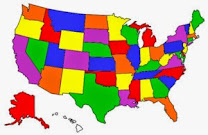


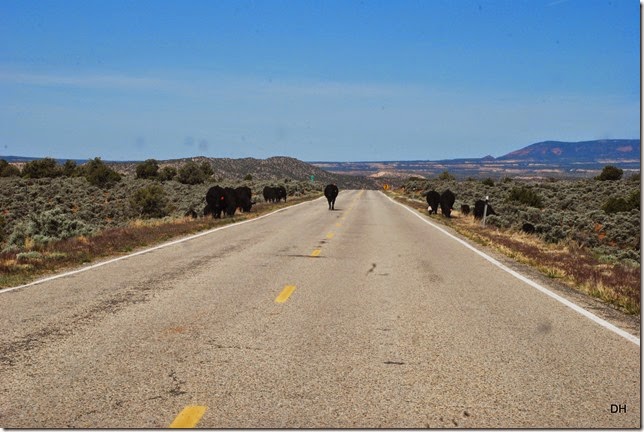

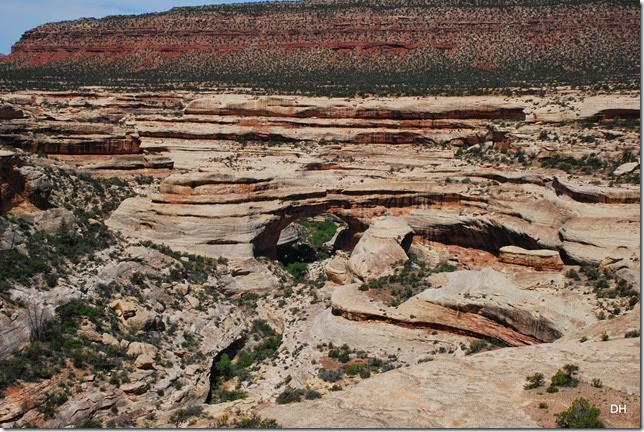

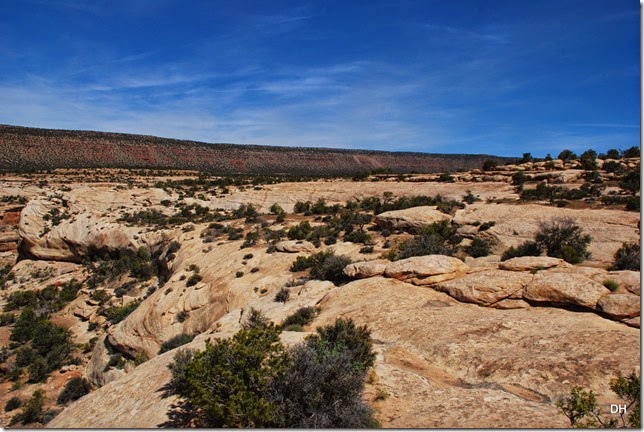

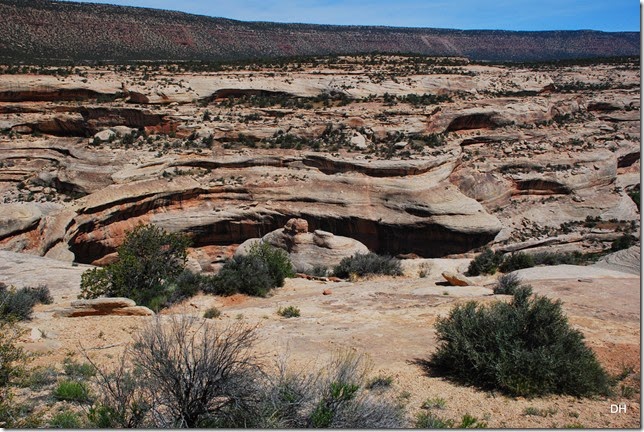
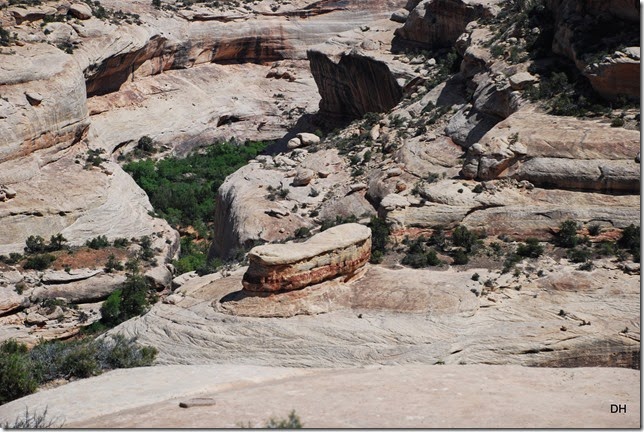
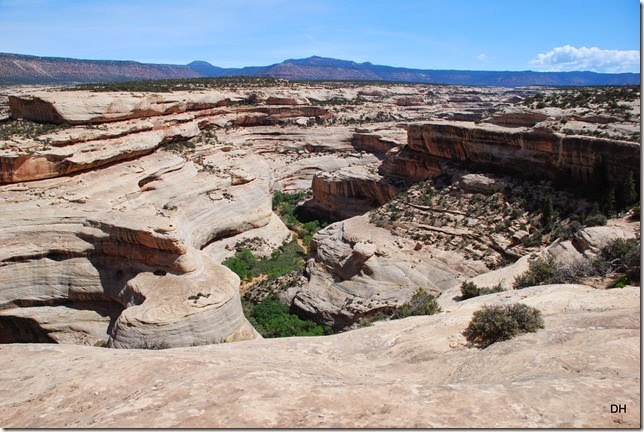
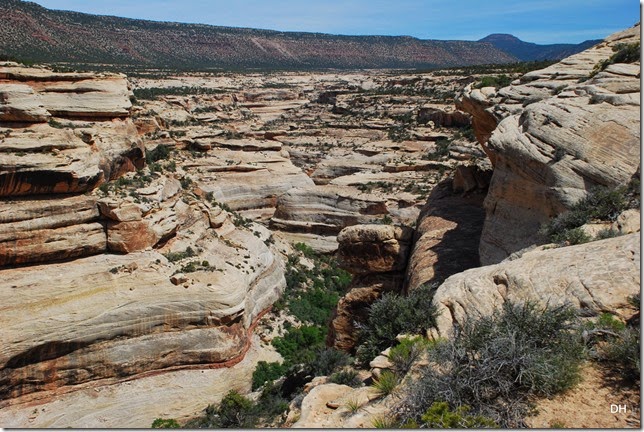
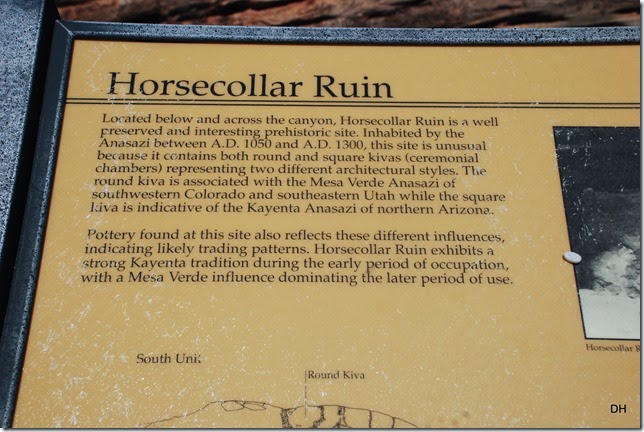
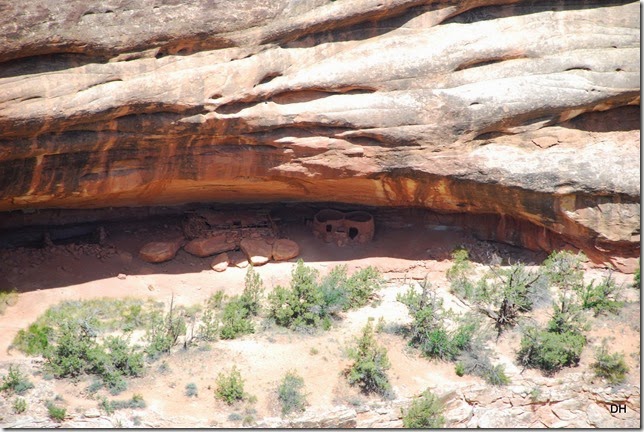
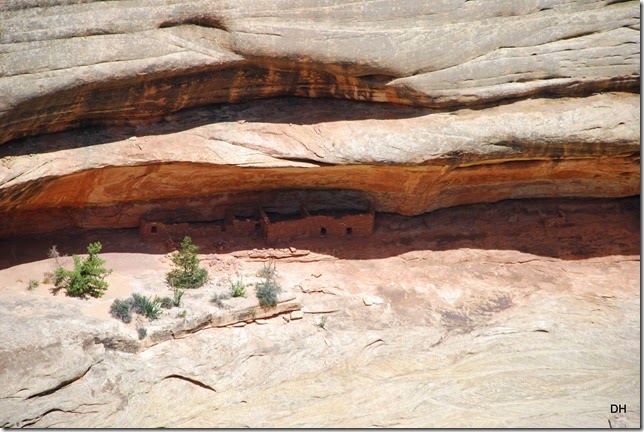
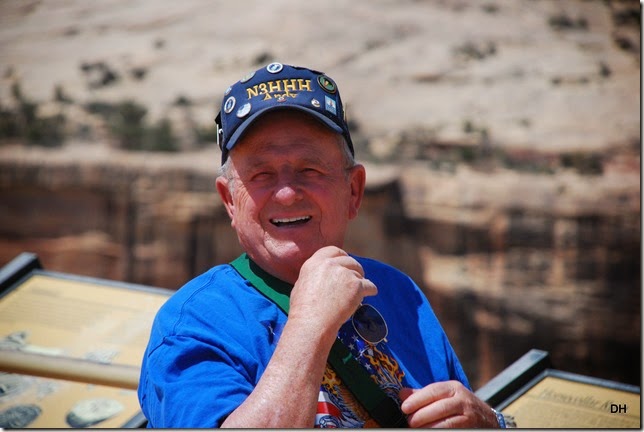
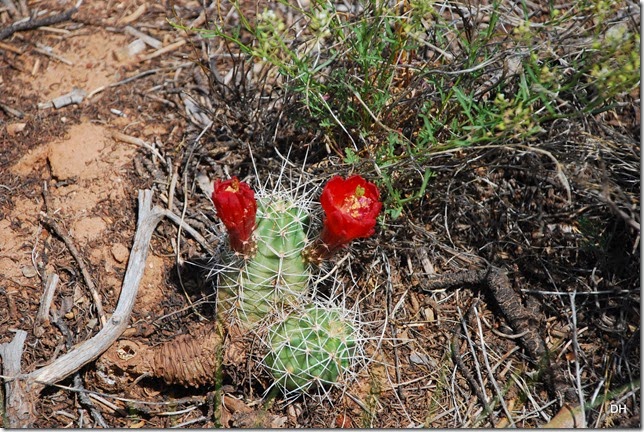
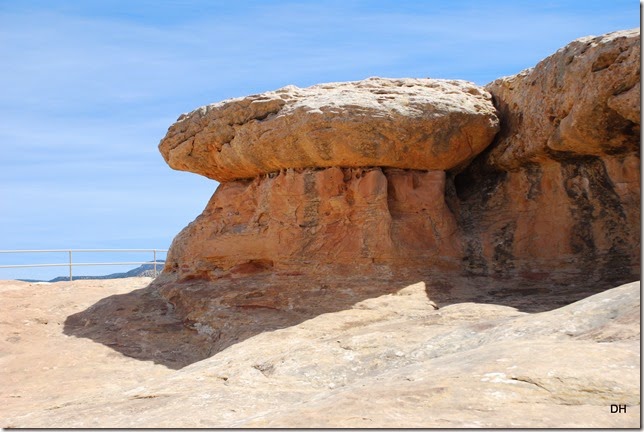
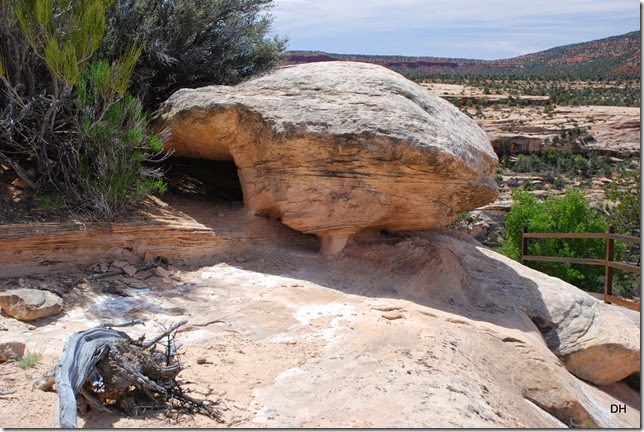
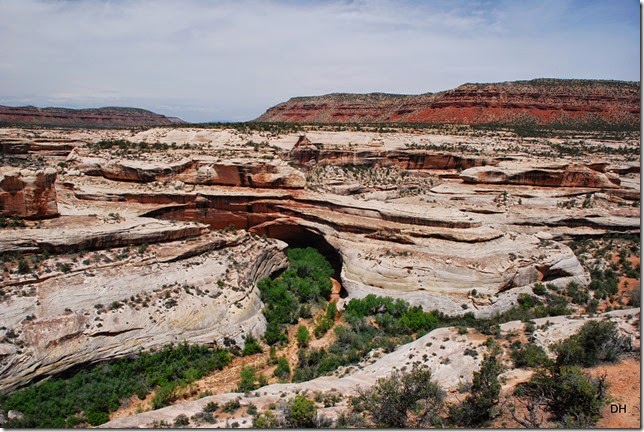
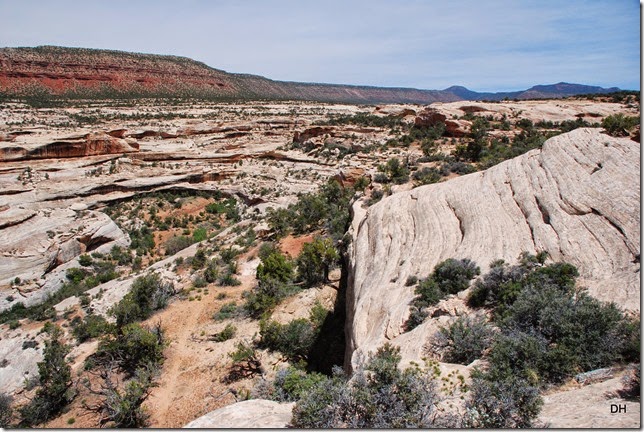
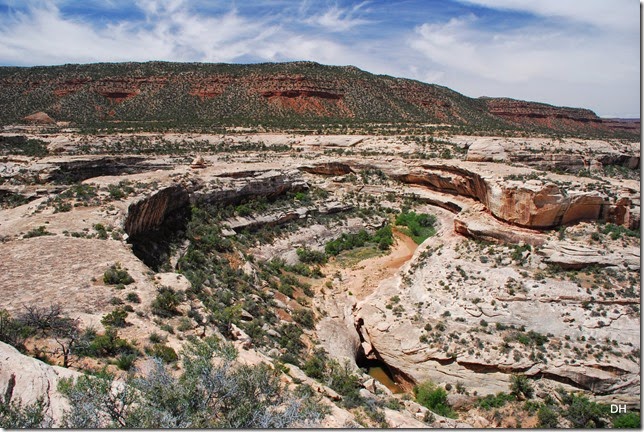
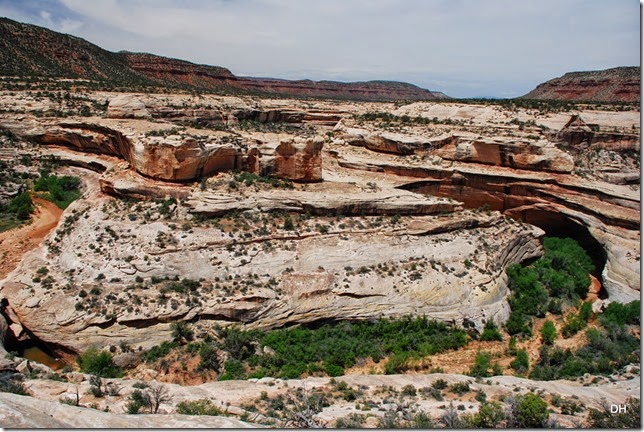
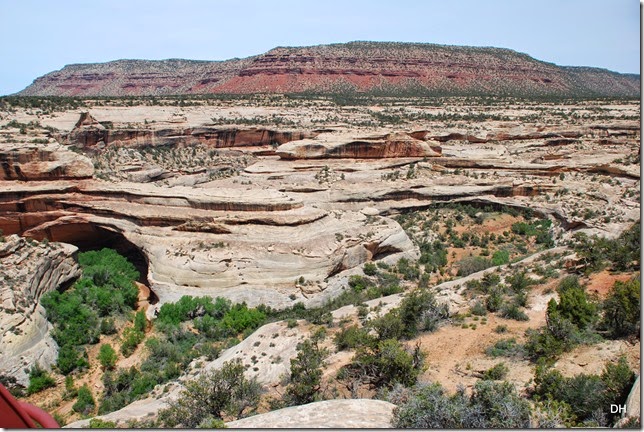
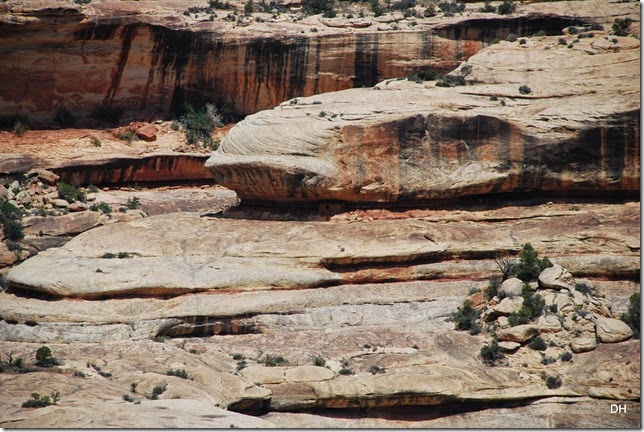
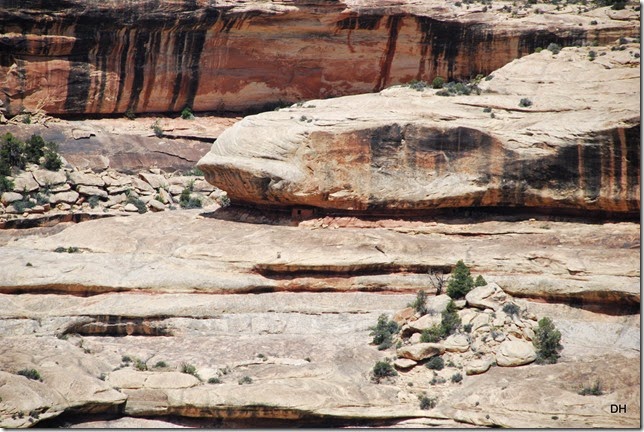
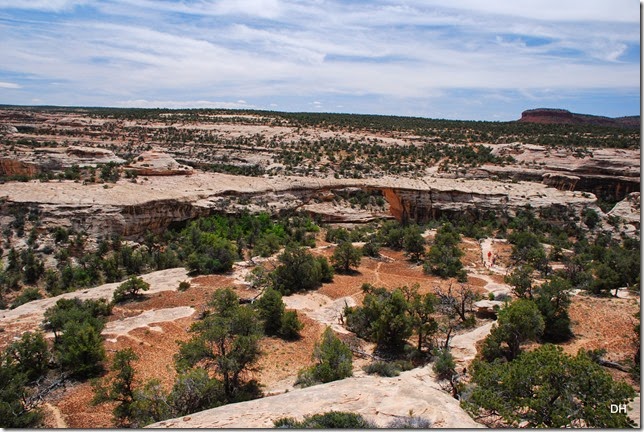
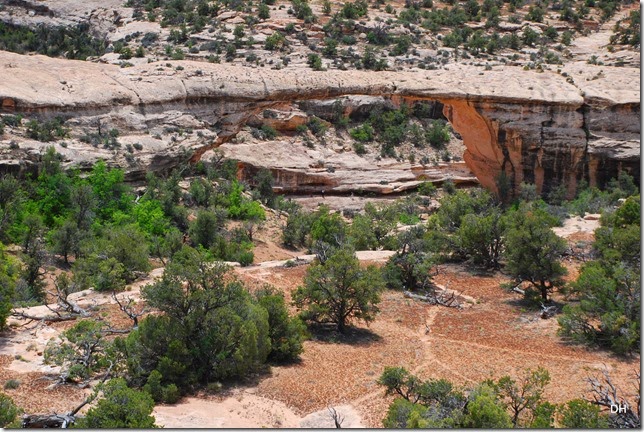
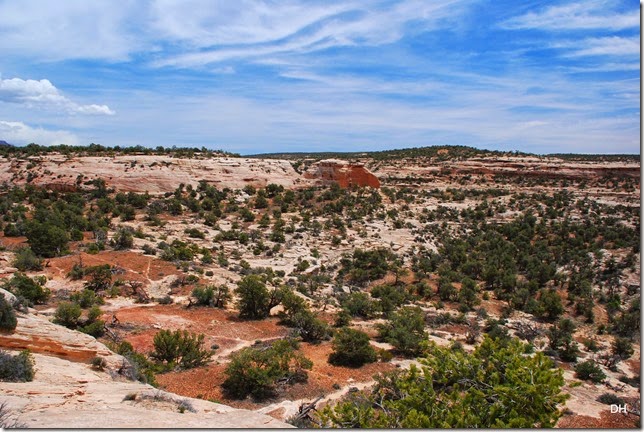
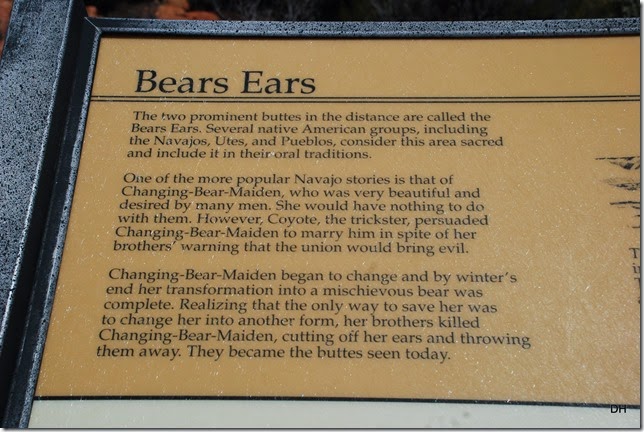

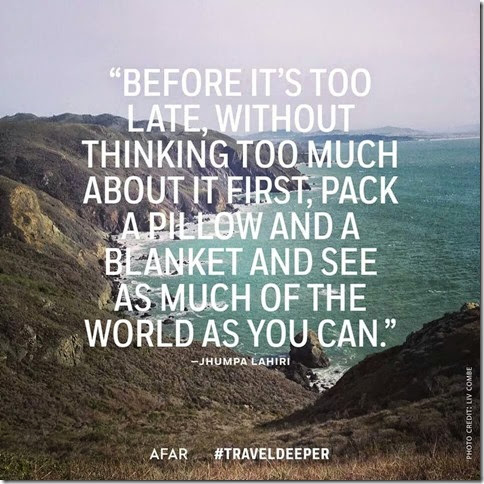


No comments:
Post a Comment